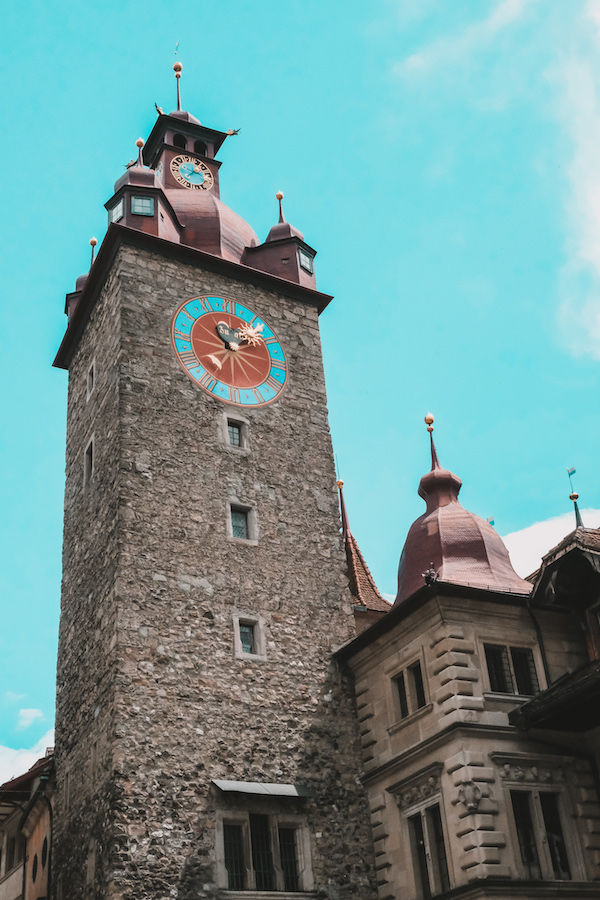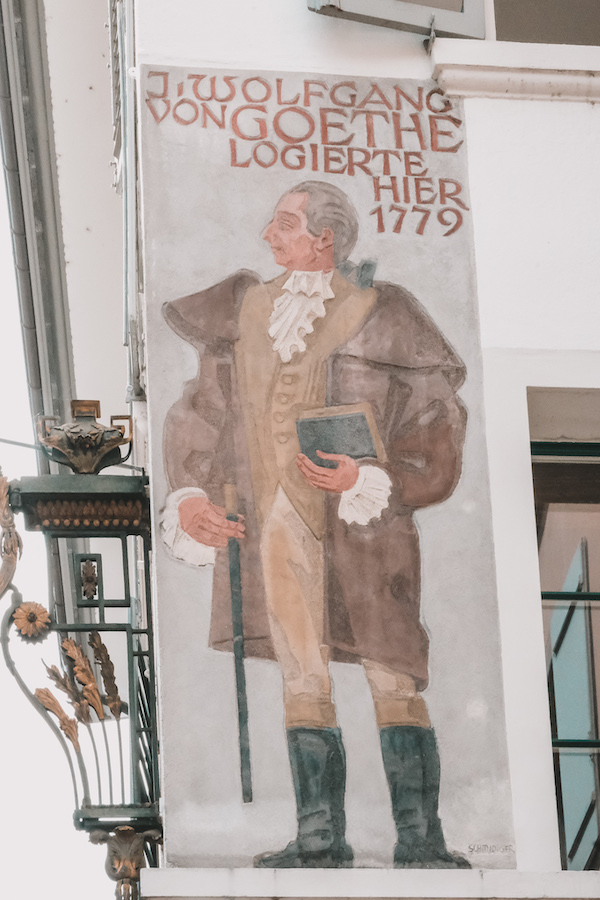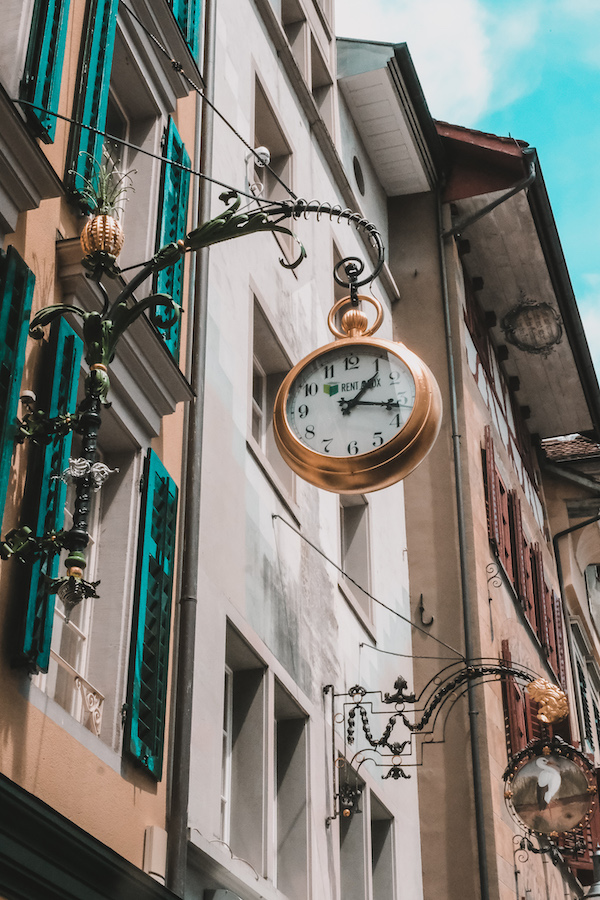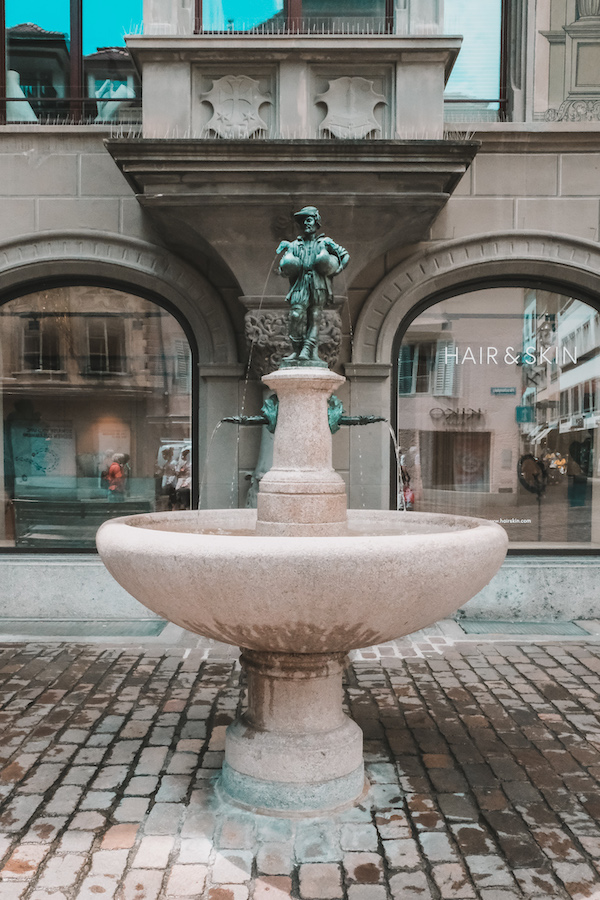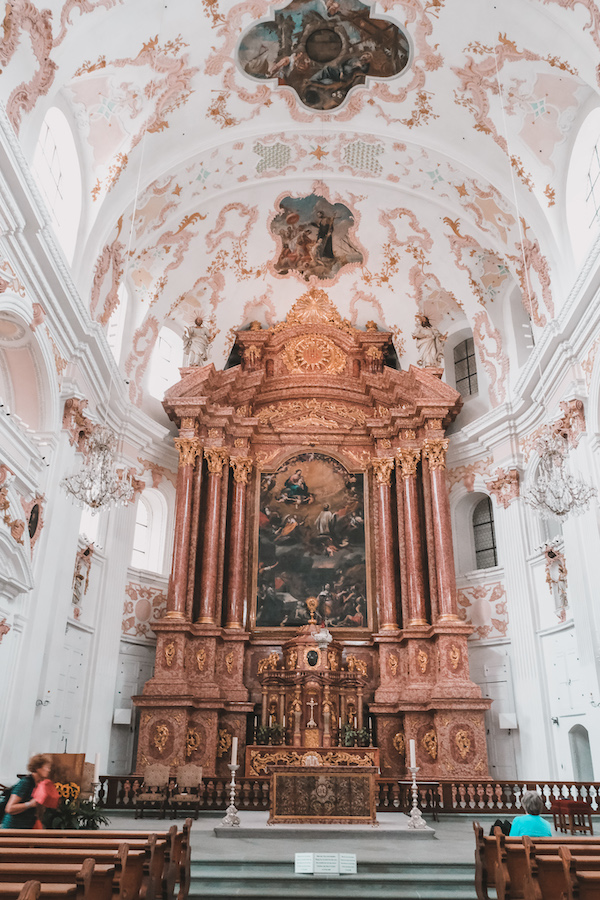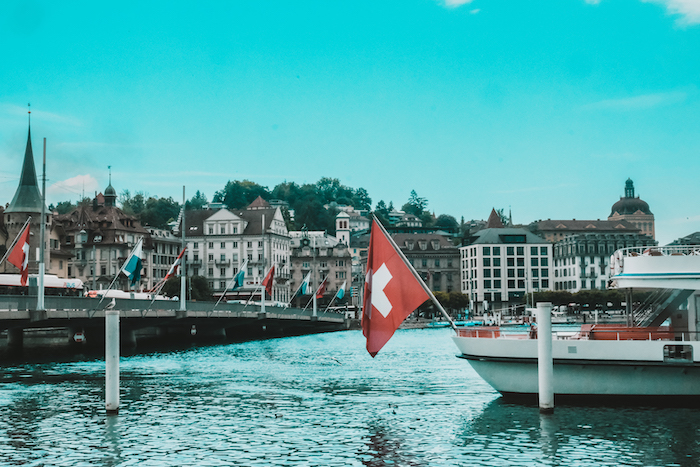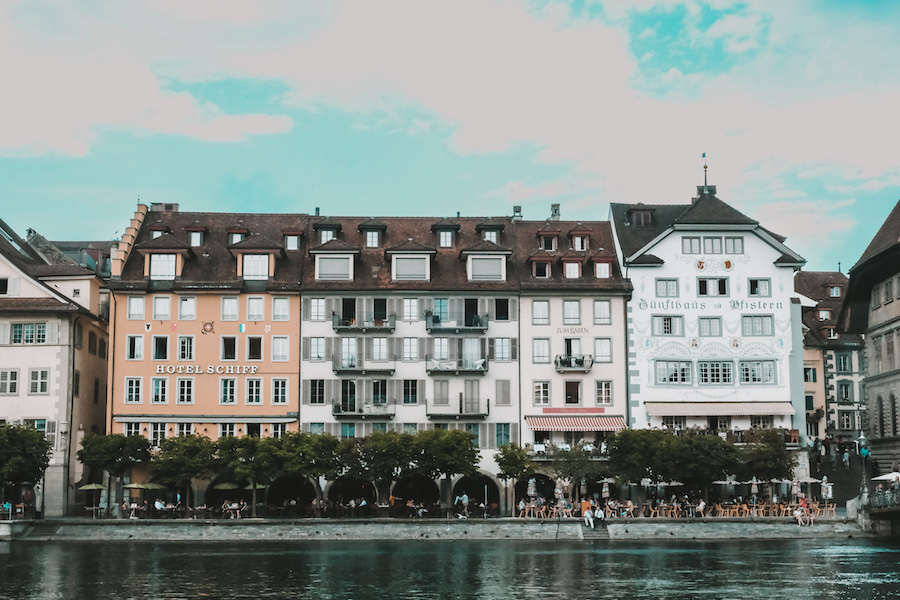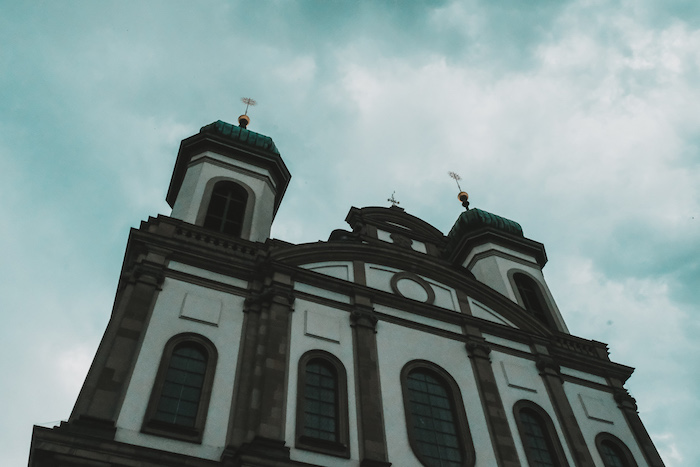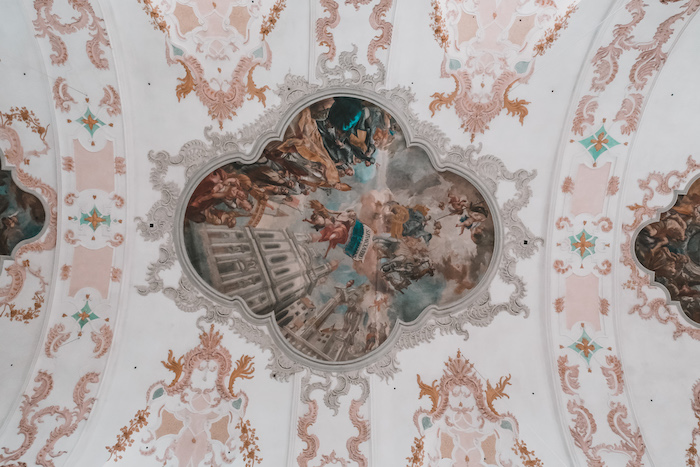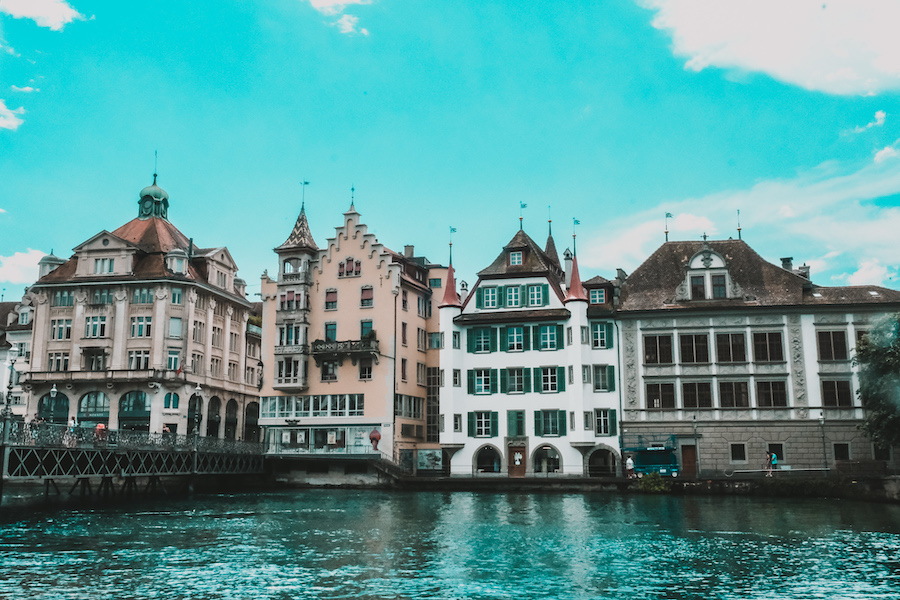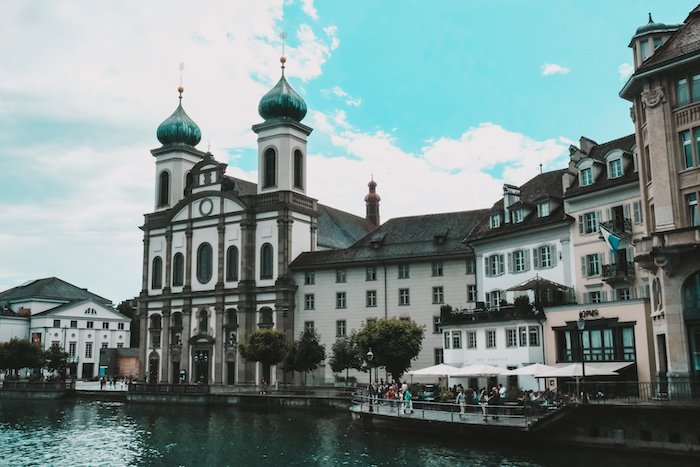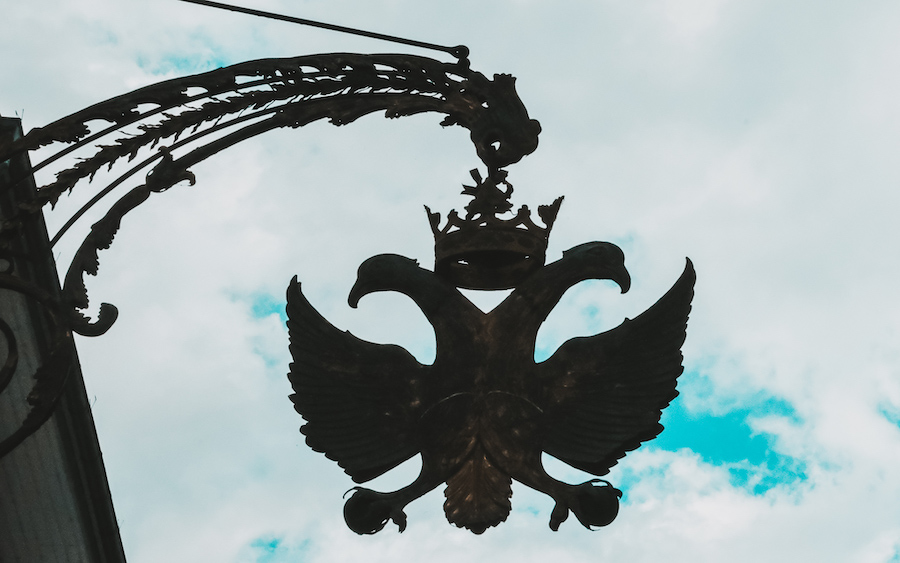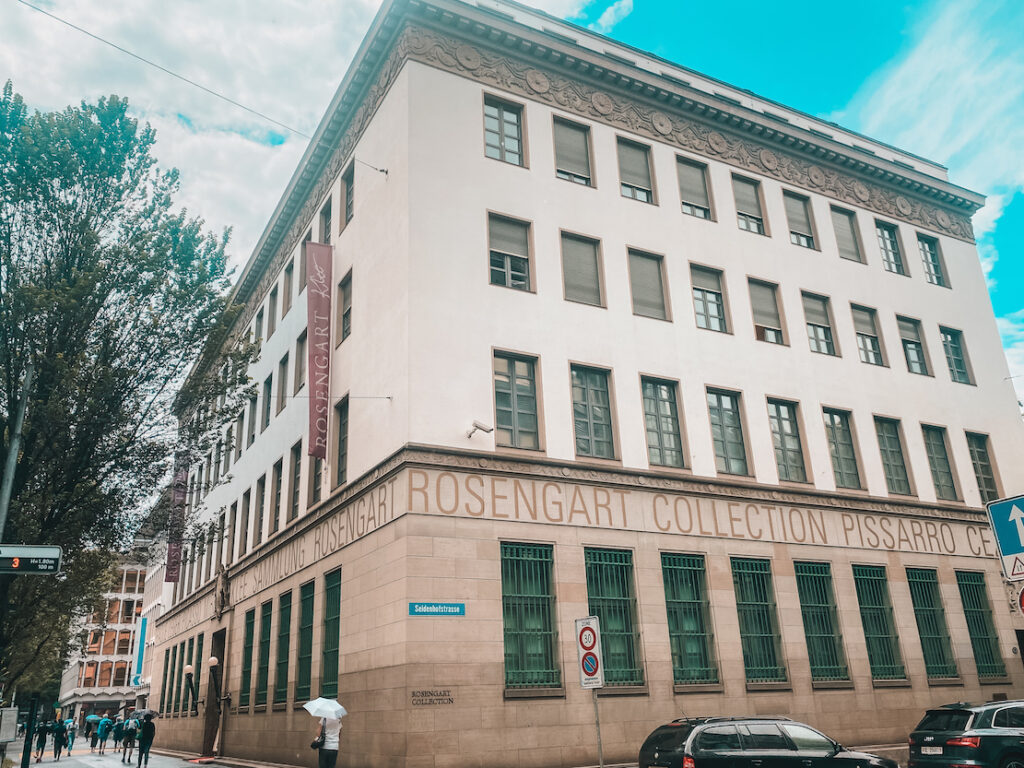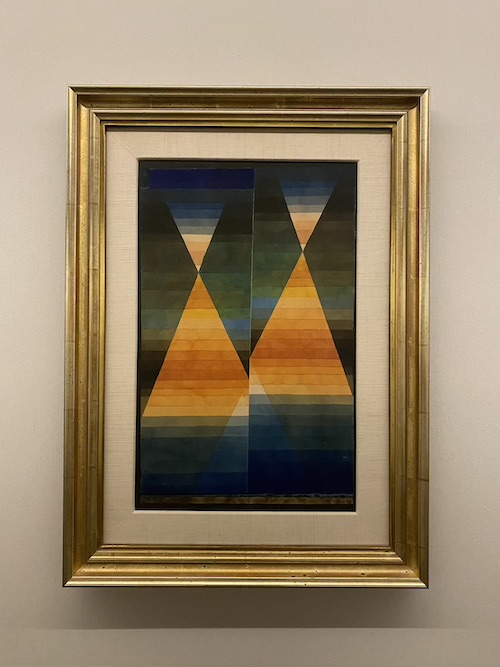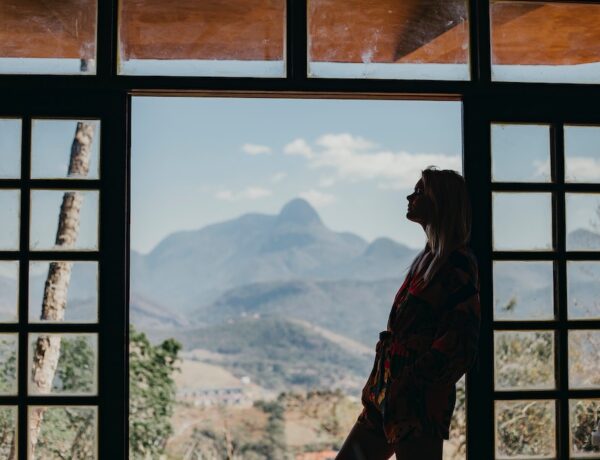It was a great challenge to plan a one-day trip to Luzern because it has a lot to offer, so it’s almost impossible to explore the whole city in a day without being in a hurry. It’s a bit like when you go to a museum and look at every painting and in the end, you don’t remember anything. Or it’s like when you use a highlighter to highlight all the text, so you don’t actually emphasise anything. So it’s no wonder that I was pretty stressed about the whole trip, and that I had a hard time finding the right angle to introduce this city. In the end, I decided to concentrate on sights within walking distance, which can be visited comfortably in a day without rushing. I even marked and saved my route in Google maps in case you’d like to follow my lead.
A few facts about Lucerne
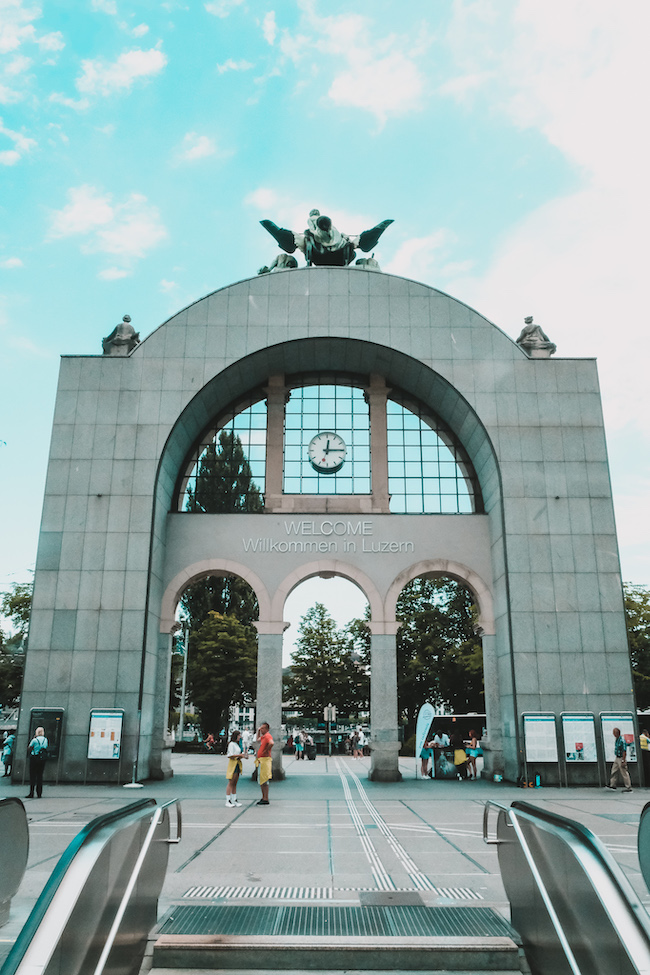
Lucerne is the capital of the canton Lucerne, located in Central Switzerland, at the lower end of Lake Lucerne (or “Vierwaldstättersee” in German). The exact year of the town’s foundation is unknown, but it must be between 1180 and 1200. The city became an important commercial centre after the St. Gotthard trade route was opened in the 13th century connecting the Lake of Lucerne region with Milan, Italy. In the same century, Lucerne had reached the size that it maintained until the 19th century. It is now the seventh largest city in Switzerland with a bit more than 80’000 inhabitants. The townscape is dominated by medieval, Renaissance, and Baroque buildings. Its main attractions are Lake Lucerne, the Chapel Bridge, and Switzerland’s most visited museum, the Transport Museum, which attracts more than 500,000 visitors a year.
As in most Swiss cities, the starting point for sightseeing is the train station, this is the meeting point of the free walking tours, and from here you can walk to Schwanenplatz, which is the first stop on the city-train tour. If you don’t want to try either of these options, you can follow my route, which I’ll describe in detail in this blog post. The whole tour takes roughly 4 – 4.5 hours (if you don’t count the museum visit), with plenty of time at each stop to take photos, have a coffee and enjoy the city.
Jesuit Church
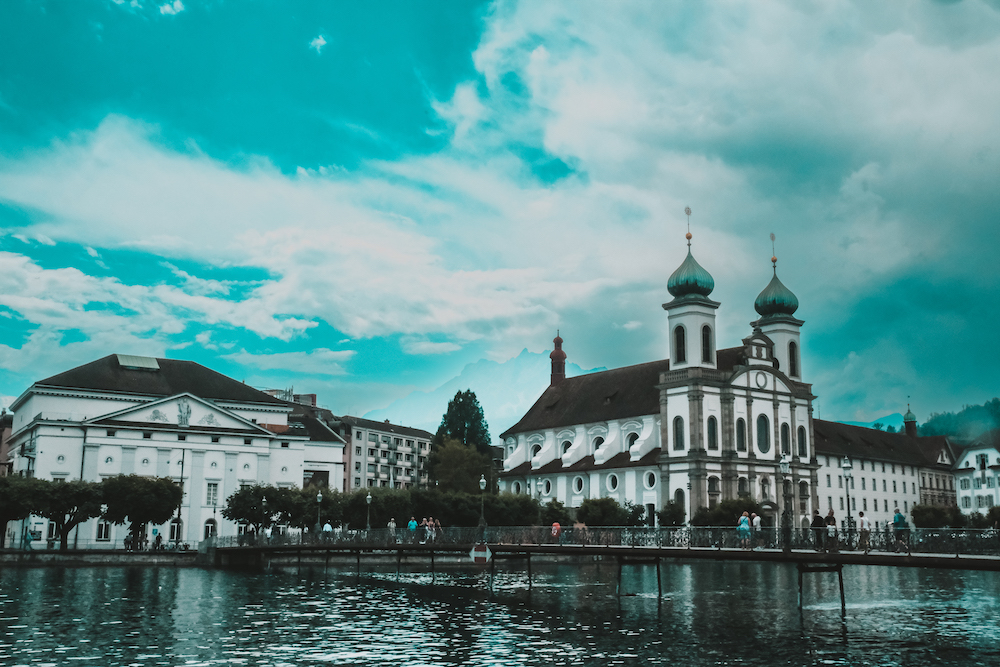
After arriving at the railway station, I headed to the riverside to visit the Jesuit church. That’s going to be the first stop of our day trip in Luzern. This way I could take a look at one of the most famous sights of the city, the Chapel Bridge, which I was actually planning to see a bit closer on my way back (Of course I was impatient and I spent about 15 minutes taking pictures of it 🙂 )
The Jesuit Church of Lucerne is a baroque church, in fact, it is the first baroque church in Switzerland, which is not so common given the country’s history of Reformation. Therefore, I would definitely recommend a visit, it is refreshing to discover a 17th-century church among the many medieval buildings. The interior, dominated by white and pink colours, should not be overlooked either. In my opinion, the colours and ornaments don’t resemble the usual Baroque style, I think it somehow has a more structured, finer effect, but of course that everyone can decide for themselves. The church is free to visit, and they even have their own app to visit the whole building.
Old Town and Town Hall
Lucerne is known to have preserved its medieval townscape very well, although to be honest, this is true of almost all Swiss cities – but of course, this does not detract from the value of the city. I personally love the fact that every time I walk into a street, I come across buildings decorated with hundreds of years old medieval guild signs and paintings. If you look closely, you can even discover that famous people like Goethe or Wagner once slept in them. One can’t help but wonder what the medieval townscape might have looked like, how dirty the streets might have been, knowing that there was no plumbing, and that the small streets that now seem mysterious, even romantic, used to serve as latrines.
I walked around the Weinmarkt and Hirschenplatz, but actually, wherever you go in the old town, you’ll find beautiful buildings. On the side of most buildings you will find the year it was built, the name of the builder and sometimes even what or who it is famous for. I think it’s impossible to miss the town hall (see first picture above) built in the early 1600s in the Italian Renaissance style. Its blue-red-gold sundial can be seen from almost everywhere in the city centre, so it’s well worth a closer look, especially from Tuesday to Saturday, which is when – centred around the town hall – one of the largest open-air markets in Switzerland takes place.
The Chapel Bridge
The Chapel Bridge is perhaps one of Switzerland’s most famous attractions, appearing on countless postcards, magnets and promotional materials. However, if your main goal is not just taking selfies in front of the colourful geraniums, but to learn something about the bridge, you should read the following paragraphs about the history of the bridge.
The Chapel Bridge is the oldest and second longest covered wooden bridge in Switzerland (originally 285 metres, now 204), linking the Old and the New Towns. The bridge, spanning the Reuss river, was built in the 14th century. The water tower was already standing at that time and served as a watchtower, later as the town archives, a treasury, a prison, and a torture chamber. It now houses a souvenir shop, which I was a bit surprised to see. Knowing its history I was expecting all sorts of medieval torture devices and cannons, or maybe a mini-exhibition. But anyways, let’s get back to the history of the bridge.
In the 17th century, the bridge was decorated with counter-reformation paintings of the history of the city, which were placed on the saddle of the bridge (see above). The aim was to promote Christianity in opposition to the Evangelical-Reformed religion that was prevalent at the time. They wanted to persuade people that spiritual happiness and earthly happiness were closely linked and that anyone who wanted to achieve both had to meet a few requirements:
- You had to be Swiss, or better even, you had to come from Lucerne.
- You had to practice the Catholic religion (no new wave reformation).
- If it came to men, it didn’t hurt to be a humble soldier, since the city’s main income came from mercenaries “exported” abroad.
So they actually prepared some nice promotional materials for the Catholic religion and the city itself – A truly sophisticated branding solution. With this in mind, it’s really interesting to check out the scenes on the saddle. Just imagine how convincing and threatening those paintings must have been to people of the time.

The most tragic moment in the bridge’s modern history was the 17th of August 1993. A fire broke out on the bridge and 81 of the 111 paintings (located in the middle span) were completely or partially destroyed. The works at both ends of the bridge survived the fire with minor damage and can still be seen today. The fire was probably caused by a pedestrian throwing a cigarette on a boat under the bridge, causing the boat to catch fire which spread to the bridge. The paintings on the destroyed wooden panels were replaced with photographic copies between 94 and 2001. Today these sections have been left blank as a reminder of the night of the fire.
Museums
My next stop was supposed to be the lakeside, but it started to rain, so I decided to seek shelter and visit the Rosengart Collection. It seemed to be just the right museum to visit for a few hours since it has a collection of around 300 works. And I wasn’t disappointed. At first glance, even the museum building looked interesting, it seemed so un-museum-like. Hardly surprising, as it was originally a branch of the Swiss National Bank in Lucerne. The museum and its collection are owned by a foundation, whose owner and namesake are the art dealer Siegfried Rosengart and his daughter Angela Rosengart. According to them, they started collecting paintings out of a love for art, they didn’t originally set out to create a museum. As a result, there are many paintings in the collection that were used to decorate their homes not so long ago.
The ground floor of the three-storey exhibition focuses on Picasso, the basement houses a Klee collection. While upstairs there are paintings and photographs focusing on Cubism and Impressionism, including works by Miró and Mattisse. My rule also applies here: don’t check out all the paintings one by one, because you won’t remember anything in the end – chose instead a few and take a closer look at them. It takes 2-2.5 half hours to walk around the museum. I highly recommend listening to the short film on the history of the museum, as Angela Rosengart (current owner of the museum and foundation) tells personal stories amongst others about Picasso and Chagall.
If you have time or if it’s raining the whole day, you should also visit the lakeside museum complex (it’s not the official name, I call it like that because there are a lot of museums on one site), which is about 30 minutes walk from the train station and about 10 minutes/5 stops by bus. The Swiss Museum of Transport, Lindt’s chocolate adventure, a planetarium, and the Hans Erni museum are all located here. It’s a great place to visit with children, although It’s pretty crowded on rainy days, so it might not be the best destination for small children.
Lake Lucerne
Luckily, by the time I finished at the museum, the sun was out. So I had time to walk to the lakeside. On my first visit, I was with my sister in Lucerne and she said that you could almost see how aristocratic couples used to promenade along the shore, and indeed… The lakeside of Luzern is still a great place for a long walk, but many people come here for lunch or for a run. In nice weather it’s also worth taking a boat trip, there are plenty of trips, ranging from a short one-hour trip to longer ones of up to 5 hours. All the information is available on the lake’s website, with prices, tickets, and useful tips.
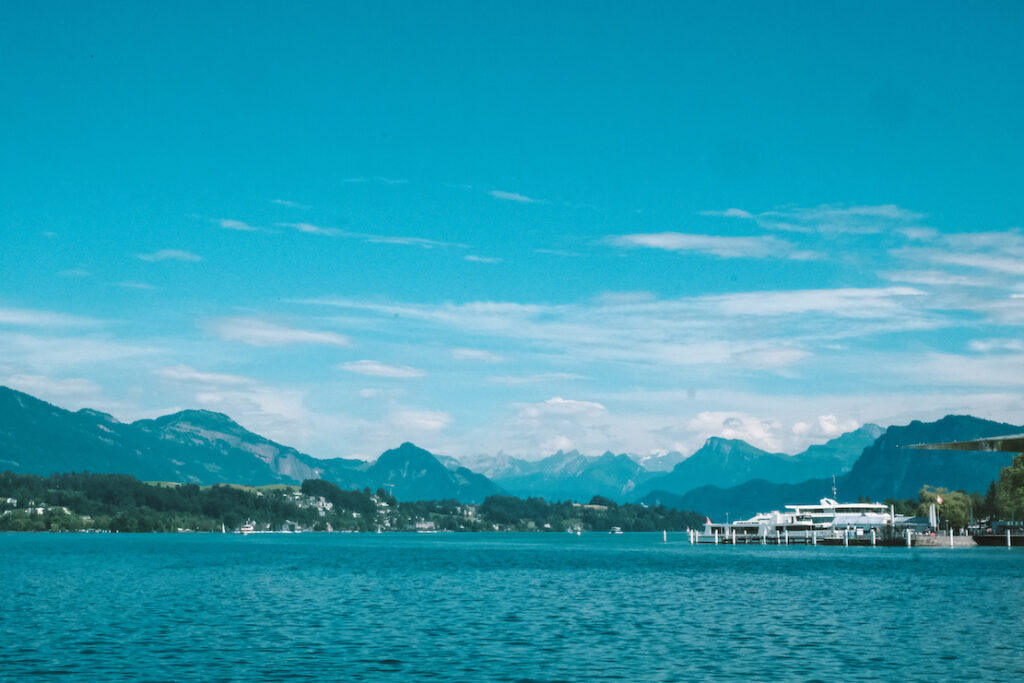
FAQ
What are the main attractions in Lucerne?
- Lake Lucerne, the Chapel Bridge, the Old Town, the Townhall, the Jesuit Church, the Swiss Museum of Transport
What language do they speak in Lucerne?
- The official language is German but they do speak English in most places.
Is there a tourist discount city card?
- Yes, it’s called the Visitor Card, which is given to tourists who stay at least one night in Lucerne. The visitor card entitles you to use buses and trains within zone 10 free of charge. It also offers a number of discounts on the surrounding lifts, mountain railways, museums, and excursions in the region. More information here.
Where can I get free internet?
- If you have the Visitor Card mentioned above, you can use the internet for free in many places in the city (and ofc you can always go to Starbucks).
Should I buy tickets online in advance or in person?
- For the Swiss Museum of Transport, the Chocolate Museum, and the Planetarium, it’s worth buying tickets online in advance as the queues are incredibly long. Do not forget to check whether you have received the actual ticket by email or just a voucher to redeem on the spot.
- But for the boat trips and excursions, I think it’s better to buy tickets on the spot because then you can show your discount cards (student card, visitor card, GA).
Which is the best one-day excursion?
- For a short trip I recommend the Hammetschwand lookout at the top of Bürgenstock, the view is amazing.
For more activities in Lucerne, as well as for hotels, restaurants, and the latest events, visit lucerne.com or drop me a message via [email protected] or Instagram.
Sources, references:
https://www.maison-du-chapeau.ch/luzern/kapellbruecke.php#:~:text=Schriftlich%20wird%20sie%20erstmals%201365,Schwanenplatz%20und%20Schweizerhofquai%20verk%C3%BCrzt%20werden.
https://www.gpsmycity.com/tours/lucerne-introduction-walking-tour-2737.html
http://lucerne.all-about-switzerland.info/lucerne-history.html
https://flatfox.ch/de/staedte-schweiz/luzern/fun-facts/


